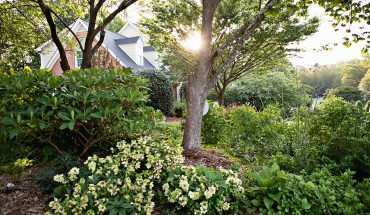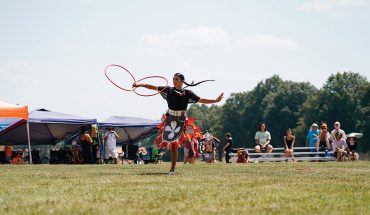by Tony Avent
illustration by Ippy Patterson
Most folks don’t typically think of winter as a great garden season, especially if they migrated here from the northern gardening hinterlands. In Raleigh, however, winter is usually filled with windows of good weather that provide opportunities to garden, as well as time to enjoy evergreen plants in the winter garden.
There are few perennials that can rival the winter interest of hellebores, a.k.a. Christmas or lenten rose. Despite the name, hellebores are related not to the rose, but to clematis. These evergreen staples are among the most coveted perennials by those who know them. Sadly, they still remain relatively unknown outside of plant enthusiast circles. Because hellebores don’t flower quickly from seed (it usually takes two to four years), and often finish flowering before most folks visit garden centers in the spring, hellebores are rarely seen at typical retailers.
Most hellebores came to the United States from the Balkans, most notably the former Yugoslavia. I was fortunate to have spent time last spring hiking through Bosnia, Croatia, Slovenia, and Montenegro, where I simultaneously dodged goat pies and land mines while studying hellebores in their native haunts. In the wild, we saw hellebores growing both in open alkaline meadows and mature woodlands. In the latter, they often intermingled with other woodland garden favorites like wild ginger, epimedium, and ferns.
Hellebores have long been grown in gardens, although originally for their medicinal properties. Hellebore leaves are filled with alkaloid toxins and have been used medicinally as both as a poison and a purgative. It is because of their toxicity, however, that hellebores are prized as deer-resistant plants for those suffering an excess population of “wood goats” in their neighborhood.
Most garden hellebores, Helleborus x hybridus, are a mongrel mix of hybrids comprised of numerous Balkan species that have been bred together for nearly a century. While one of the earliest-flowering true species, Helleborus niger, starts flowering about Christmas in Raleigh, most Helleborus x hybridus peak for us in mid to late February and can last in flower for several months.
Hellebores are renowned for their tolerance of drought and neglect, although they truly thrive when grown in a slightly moist but well drained soil. They are very sensitive to poor drainage, so sites that remain soggy or excessively wet are not for them.
A true testimonial of the durability of hellebores are those growing at the old Raleigh garden on Park Avenue of North Carolina’s famed garden writer, the late Elizabeth Lawrence. Her Raleigh home, from which she moved in the 1940s, is still filled with wonderful clumps of Helleborus x hybridus, despite being home to a fraternity house for many decades!
Because hellebores naturally become root-bound in containers, it is important to remove the potting mix and loosen the roots when planting them in the ground. This will make it much easier to keep your hellebore roots watered and alive until they are well established. If you want to enjoy your plants in containers before planting, be aware they are very heavy consumers of water when actively growing in the fall and spring months, but not when they go into a nonactive growth state during the heat of summer.
Breeding efforts of the last decade have resulted in incredible advances in flower color as well as flower shape and form. It’s not surprising now to see everything from double purples to reds and yellow and pretty much anything in between – a far cry from the often muddy flower colors of the hellebores of the 1980s. You can remove the developing seed in June to keep your colors pure, or allow the plants to seed around, and in a few years, you’ll enjoy a rainbow of amazing colors in your winter garden.




